Random Forests
Decision Trees
Pros
- Interpretable
- Simple
- Classification or Regression
Cons
- Poor accuracy
- High variance
Bias vs Variance
Bias-Variance Trade-off
$Error = Variance + Bias^2 + noise$
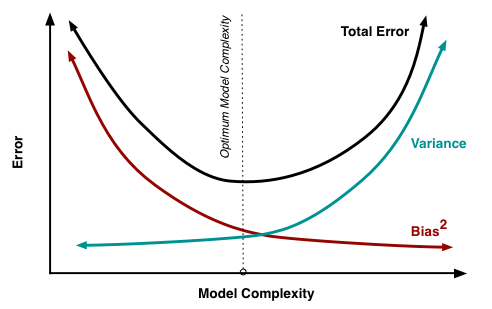
Reduce bias: Build more complex models
Reduce variance: Use a lot of data or simple model
How to reduce the error caused by noise?
Fisher Rolling in his Grave
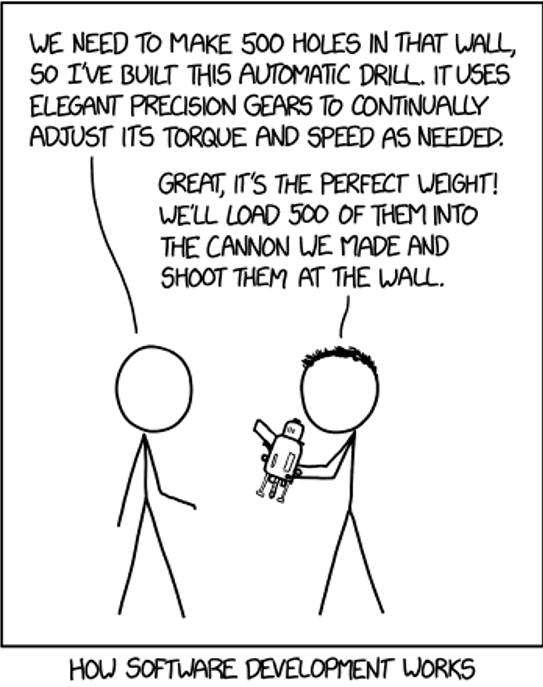
Bagging
Averaging a set of observations reduces variance.
But we only have one training set ... or do we?
Bootstrap
Simulate new datasets:
Take samples (with replacement) from original training set
Repeat $n$ times

Bootstrap visualization
Sample has $n$ elements.
Probability of getting picked: $\frac{1}{n}$
Probability of not getting picked: $1-\frac{1}{n}$
If you sample $n$ elements with replacement, the probability for each element of not getting picked in the sample is: $(1-\frac{1}{n})^n$
As ${n\to\infty}$, this probability approaches $\frac{1}{e}\approx.368$
Thus, $0.632$ of the data points in your original sample show up in the Bootstrap sample (the other $0.368$ won't be present in it)
Bagging
Train a tree on each bootstrap sample, and average their predictions (Bootstrap Aggregating)
Random Forests
Like bagging, but removes correlation among trees.
At each split, considers only a subset of predictors.
Notes:
Random forests typically consider $\sqrt{\textrm{number of features}}$ or $1/3$ at each split (if 10 features, then it considers ~3 features), and picks the best one.
Random Forests
A Step away from Interpretation
- How do you model a vote from many trees?
- Improved prediction, reduced interpretation
- Feature importance
- Mean decrease in Gini index relative to the max
- Show’s influence not directionality
- Bucketing importance on highly dimensional data
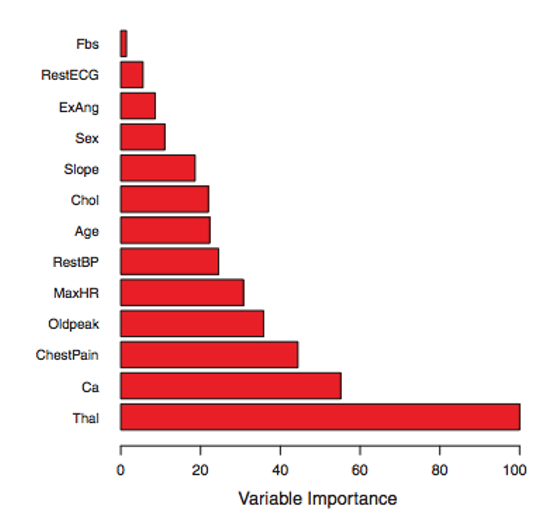
Hyperparameter Selection
What is a hyperparameter?
Which dataset should we use to select hyperparameters? Train? Test?
Validation Dataset
Split the dataset into three!
- Train on the training set
- Select hyperparameters based on performance of the validation set
- Test on test set
What if you don't have enough data to split in 3 separate sets?
K-Fold Cross Validation

Grid Search
Try various hyperparameter settings to find the optimal combination
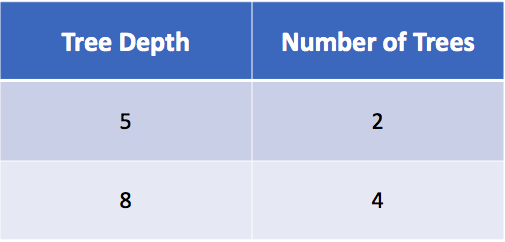
How many models will this build (k = 3)?
Random Forest Lab
Problems with Grid Search
Exhaustive enumeration is expensive
You have to determine the exact search space
Past information on good hyperparameters isn’t used
So what if...
- You have a training budget
- You have a lot of hyperparameters to tune
- Want to pick your hyperparameters based on past results
Hyperopt
Optimization over awkward search spaces
Serial and parallel
Spark integration
3 algorithms
- Random Search
- Tree of Parzen Estimators (TPE)
- Adaptive TPE
Random Search
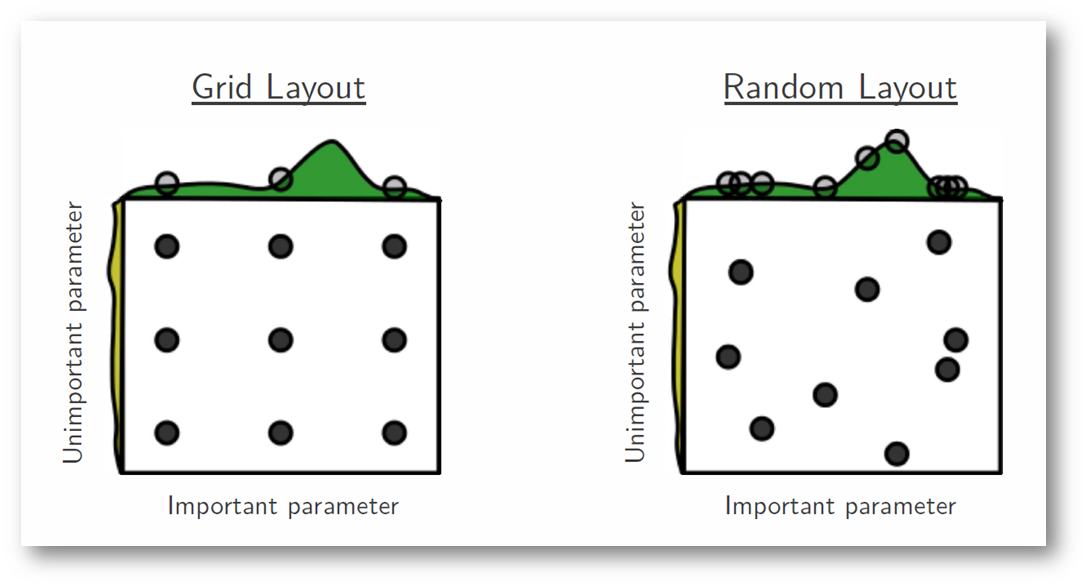
Generally outperforms exhaustive search
Can struggle with on some datasets (e.g. convex spaces)
Tree of Parzen Estimators
Meta-learner, Baysian process
Non-parametric densities
Returns candidate hyperparameters based on best Expected Improvement (EI)
Provide a range and distribution for continuous and discrete values
Adaptive TPE better tunes the search space (e.g. freezes hyperparameters, tunes # random trials before TPE)
Other Ensemble Models
Gradient Boosted Decision Trees
Sequential method
Fit trees to residuals (on first iteration, residuals are the true predictions)
Idea: build tree more slowly
These trees are NOT independent of each other
GBDT
| Y | Prediction | Residual |
| $40$ | $35$ | $5$ |
| $60$ | $67$ | $-7$ |
| $30$ | $28$ | $2$ |
| $33$ | $32$ | $1$ |
| $25$ | $27$ | $-2$ |
| Y | Prediction | Residual |
| $5$ | $3$ | $2$ |
| $-7$ | $-4$ | $-3$ |
| $2$ | $3$ | $-1$ |
| $1$ | $0$ | $1$ |
| $-2$ | $-2$ | $0$ |
| Y | Prediction |
| $40$ | $38$ |
| $60$ | $63$ |
| $30$ | $31$ |
| $33$ | $32$ |
| $25$ | $25$ |
Boosting vs Random Forest
Boosting starts with high bias, low variance and works right

RF starts with high variance and reduces it by averaging many trees
Kaggle
Data Science and Machine Learning Competition site
XGBoost one of most winning solutions
https://www.kaggle.com/What is XGBoost?
Boosted trees with…
- Weighted quantile sketch for approximative learning
- Smart cache access and data compression
- A sparsity-aware algorithm for sparse data
- Sharding
10x speed increase
Scale in the billions
Parallelized and distributed
Resources
- Yggdrasil: An Optimized System for Training Deep Decision Trees at Scale
- PLANET: Massively Parallel Learning of Tree Ensembles with MapReduce
- HOGWILD!: A Lock-Free Approach to Parallelizing Stochastic Gradient Descent
- XGBoost: A Scalable Tree Boosting System
- CatBoost vs. Light GBM vs. XGBoost
- Approximate Medians and other Quantiles in One Pass and with Limited Memory
- Probabilistic Counting Algorithms for Data Base Applications original sketch paper)
- Isolation Forests